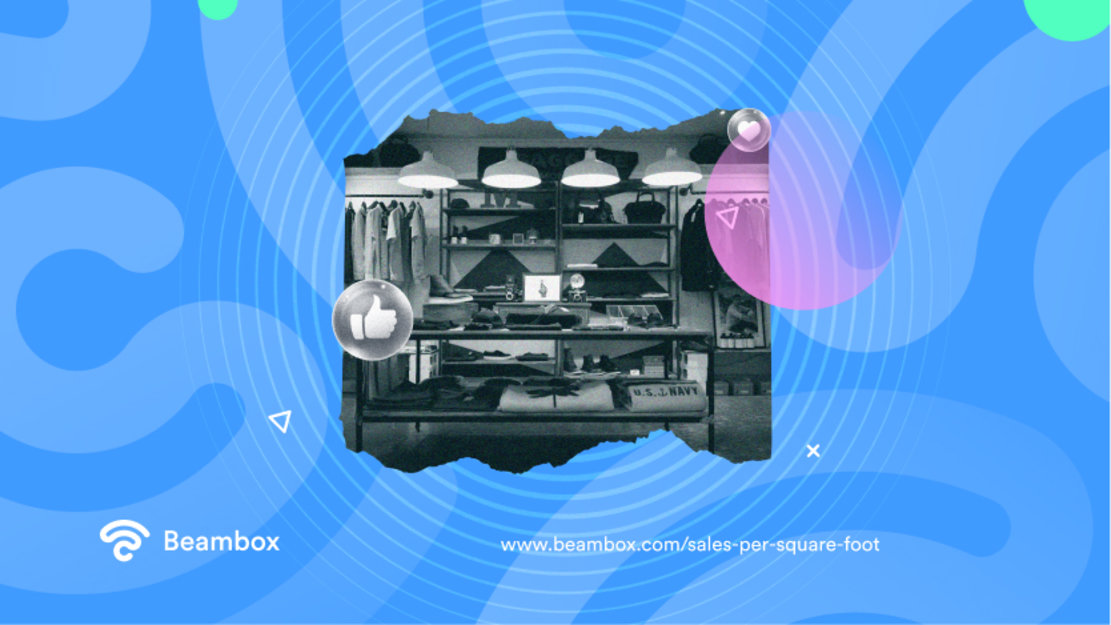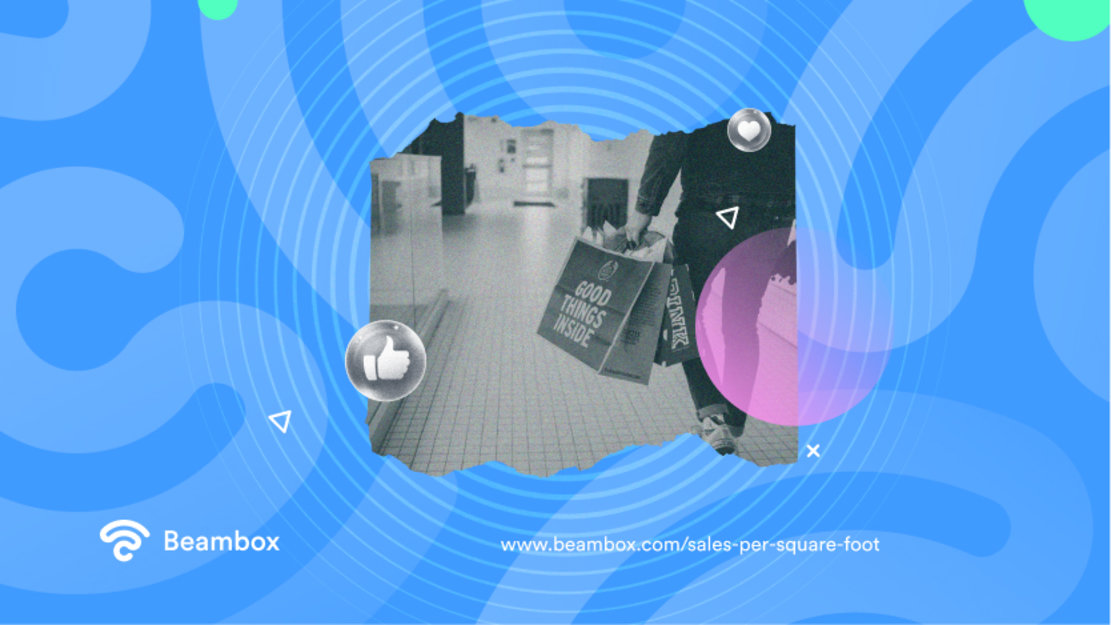Sales per Square Foot: How To Measure and Scale Your Results
The metric of sales per square foot is an essential measure of the success of your stores. It reflects the effectiveness of store layout, product placement, loyalty, and marketing campaigns. Moreover, it provides insights into the overall health of retail space utilization. By focusing on optimizing this metric, you can scale your revenues, ensuring you maximize your space. This article will guide you through the essential steps to accurately measure and enhance this retail metric.

How Do You Calculate Sales per Square Foot?
Let’s start by defining the main concept here. Sales per square foot measures the average revenue a business generates for every foot of sales space. As a matter of fact, if you track where you stand, you can improve. However, how do you calculate sales per square foot?
Luckily, calculating it is a straightforward 3-step process:
- Determine your total sales revenues over a given period (monthly or annual sales).
- Measure the total square footage of your retail space.
- Divide the sales revenues by the foot of your venue.
Let’s make an example. Imagine your annual sales are $300,000, and your store occupies 1,500 square feet. Then, your number would be $200.
This formula provides valuable insights that you can use along with other relevant data like CLV, marketing churn, and more. It can also be useful to understand your industry benchmarks so you can see how you are doing compared to others. Moreover, measuring sales per square foot allows you to identify opportunities for optimizing your space.

Average Retail Sales per Square Foot
As mentioned, understanding the average retail sales per square foot is extremely useful. You’ll be able to pinpoint a benchmark to measure your store’s performance against industry standards. However, the average varies largely across retail categories and locations.
For example, luxury goods stores report higher numbers compared to general merchandise stores. This results from differences in product value and retail foot traffic. Nonetheless, it is useful to gauge a measure that is realistic to your sector and your location.
Solink shows that average retail square foot sales vary a lot:
- Apple: $5500/sqft
- Tiffany’s Co.: $3000/sqft
- Costco: $1638/sqft
- Walmart: $574/sqft
- Target: $300/sqft
It is likely that your numbers will be different from these giants. However, consider them as a relatively realistic measure of where your business should be. After this, you can appreciate where you are and set realistic goals for your physical store. Never forget, though, that this space is evolving quickly. Online sales are increasingly influencing consumer behavior and, consequently, the metrics of success in physical retail stores. Keeping an eye on these benchmarks can help you stay competitive and adapt to market trends.

Factors Influencing Square Foot Sales
Many factors contribute to the overall performance of a retail space, influencing this vital metric. However, the main factors are just a few. Understanding and optimizing these aspects will lead to better performance and higher loyalty toward your business.
- Store Layout: The design and arrangement of a retail space significantly impact the shopping experience. Just like a website, an optimized layout ensures easy navigation, leading to increased customer engagement and higher sales. Ultimately, the experience will be better, and spending will be easier.
- Location: A store’s location is crucial in determining foot traffic, which directly influences overall sales. Imagine the difference between having your store in a popular square instead of having it in a suburban area. Prime locations with high visibility and accessibility typically draw more customers and enhance sales potential. However, they often come with higher rental costs. If you are about to open a retail business, consider this aspect.
- Product Placement: How your customers see your products influences their behavior. Effective product placement highlights new or high-margin items, driving impulse purchases and increasing average revenue per visit. The goal is to create a visually appealing product arrangement that enhances the shopping experience.
- Marketing Campaigns: Targeted marketing efforts can boost foot traffic and, in turn, sales per square foot. Ensure you run marketing campaigns for both online and offline stores, creating awareness and interest. However, ensure you know well your consumer profile otherwise, you might just waste time and money. This is particularly important during seasonal peaks, as promotions can drive higher sales.

Simple Strategies To Improve This Metric
The only limit here is your creativity. However, there are certain areas that can yield better results. These strategies will help you maximize the profitability of your venue:
- Revamping Store Layout: Look at your store layout and see if you can improve it. You need to enhance customer flow and product visibility. Consider creating focal points and ensure that the most popular items are visible and accessible.
- Utilizing Technology: Use technology to collect customer data, analyze sales, and run marketing campaigns. Gaining insights and acting on them will improve your business results from any perspective.
- Retail Operations: The shopping experience at your venue affects people’s will to spend as well as their loyalty. Customer service, store atmosphere, and interactive displays all play a part here. Make sure to review your overall retail operations to provide a positive shopping experience. By improving the retail dwell time of your clients, you’ll improve sales.
- Optimizing Product Assortment: Pick products that your customers want as well as local market trends. You don’t need much stuff in your inventory. Rather, you need what your customers desire and what attracts people. Ensure that you analyze sales data frequently so you can identify performing products and adjust your inventory accordingly.
- Cross-Merchandising: Place complementary products near each other. This encourages customers to make additional purchases they hadn’t initially planned.
- Appealing Signage: Clear and attractive signage guides customers through your store and allows you to highlight promotions or new products. Whether you use physical or digital signage, you must guide your customers where you want their attention to be.

Acting on What You Know
After understanding and measuring sales per square foot, the most important thing is to act on this data. As you’ve read, there are many things you can do to improve your results. Start with a strategy that is easy to implement and move gradually toward more complex initiatives.
If you are looking for a platform to collect customer data and run marketing campaigns, try out Beambox. Over 12,000 venues are using Beambox WiFi marketing to understand their customers deeply and automate their marketing initiatives. Start your trial now!
Get Started With Free WiFi Marketing
Beambox helps businesses like yours grow with data capture, marketing automation and reputation management.
Sign up for 30 days free


